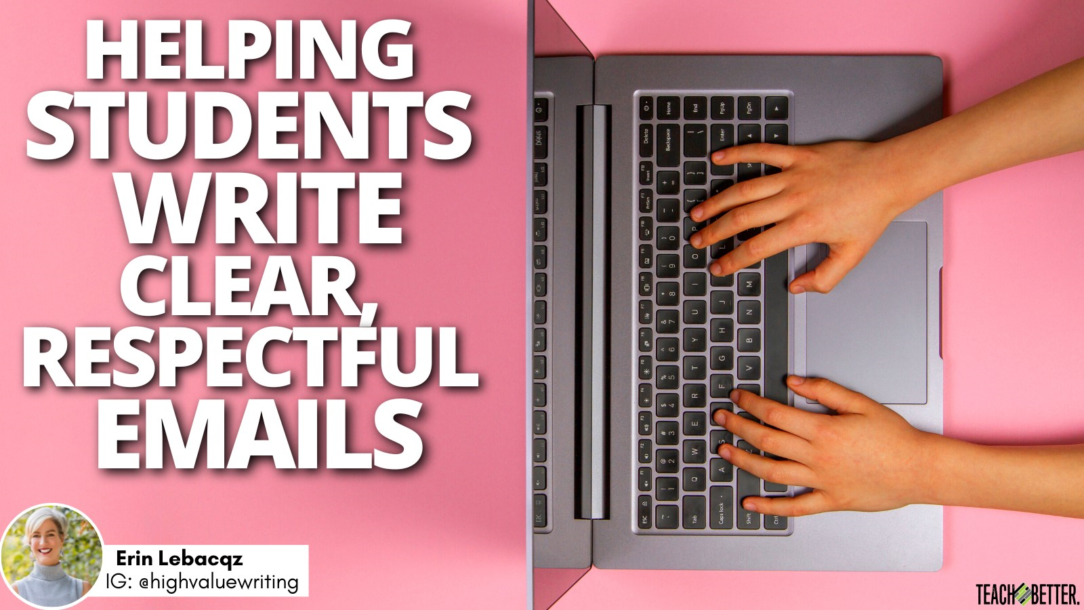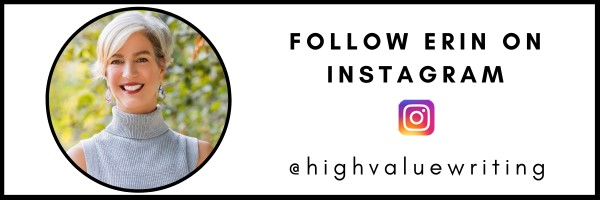TL;DR:
- Students will need to email in their future jobs and often in their academic lives as well. Therefore, let’s teach them to do it well!
- Students will have a higher chance of professional success if they know how to communicate clearly and respectfully.
- The videos in this series will help your students learn to write emails that are both clear and respectful.
Email has become a writing genre unto itself, and yet most of us never really get shown how to do it. We don’t typically grow up being given email writing assignments. Often, we begin our careers with no one having told us how to write clear, respectful emails.
I recently heard an adult learner in one of my classes describe having to write work emails for the first time. He didn’t exactly feel like he was given any preparation:
“[The boss] says, ‘Welcome, here’s your desk. Here’s your laptop. Here’s your email account. Now go write emails.'”
Young people beginning their careers often walk into the sudden need to write work emails—and the reality of getting judged for how they write them—with no preparation whatsoever.
Students of all ages use email for school: to request help, to engage in group work, to connect with scholarship and other outside opportunities. Once they’re out of school, they’ll likely use it daily for work—or at least here and there with personal business and household communication in today’s increasingly remote world. We can support their success in all areas by offering email writing assignments that help teach students to use this important writing genre.
Helping Students Gain Emailing Skills
Fortunately, we can help students and graduates show their best selves through the emails they write to teachers, potential employers, admission boards, and supervisors. 🤩 Assigning email as a writing genre helps students both learn analytic writing skills and see the application of their writing in practice.
This post offers a series of free learning videos you can use to take your students through a unit on writing clear, respectful emails. [And, as a bonus, you’ll get to watch me “go natural” with my gray hair—month by month, as I recorded these videos. 😮]
Check out these summaries of what each video offers. You can choose one or a few, based on what level you teach and what scenarios you want your students to write within.
Learning Videos on Clear Emailing
These four videos focus on email structure, content, and headings.
Overall 3-Step Emailing Process: To help students learn to write a clear and concise main point and “ask,” this video is a good place to start. It walks viewers through 3 steps to a powerful (yet brief!) email: The Main Point. Sentence, the Call to Action, and a 2-part Subject Line that’s proven to increase response rates and “compliance” with the Ask.
How to Start a Business Email: This video helps students think through the greeting and opener of their email. They’ll get tips on how to think about formality levels and how to lead with their main point.
How to Use Email Headings—To and CC: Here, you’ll find a quick overview of the difference between the “To” and “CC” parts of an email. These can be easy for students to confuse, so this quick video can clear things up!
How to Use Email Headings—Forward and Reply All: This last video works like the previous one: it focuses on two specific parts of the email heading.
Once your students know the general structure and approach most people are looking for in a business—or even academic—email, it’s time for the conversation so many people begin their first career jobs without: What about the personal connection?
In today’s work world and in schools (as we all know!), negative or accusatory emails can impact relationships badly. To really be prepared to email for school or work, then, students also need to think about tone.
[scroll down to keep reading]
Respect: Get It In Writing
The following videos will help students think about the person on the other side—their reader. These two videos (one short, one longer) provide discussion points on how to be respectful and emotionally intelligent when we email others.
5 Ways to Respect Your Reader (1-minute video): Here’s a quick version. Students will learn 5 quick ways to put their readers first.
Writing with Emotional Intelligence: For a longer discussion on emotional intelligence in writing, and communication in general, consider watching this together and following it up with a discussion. I would also highly suggest connecting this concept to texting! We’ve all been hurt by unthoughtful texts before, so we can easily relate to this concept of having a “reader” to consider when we text.
I hope you’ll find these videos helpful if you decide to bring email writing into your curriculum. Please feel free to reach out with any questions! Or, leave your question on the video in question—right in the comments—and I’ll get back to you ASAP.
About Erin Lebacqz
Erin Lebacqz helps you write with clarity, confidence, and emotional intelligence. Erin’s curriculum and book, High-Value Writing, capture Erin’s 25 years of experience working with business and academic writers around the world. Erin’s interactive writing workshops and presentations engage learners in purposeful discussions that respect their desire for intellectual growth while also providing practical strategies learners can immediately apply in the workplace.
Erin has trained and taught in the United States and Asia, in the finance, manufacturing and trades, non-profit, higher education, healthcare, and public sectors. She holds a BA in International Relations, an MA in Professional Writing, and various teaching certificates.



